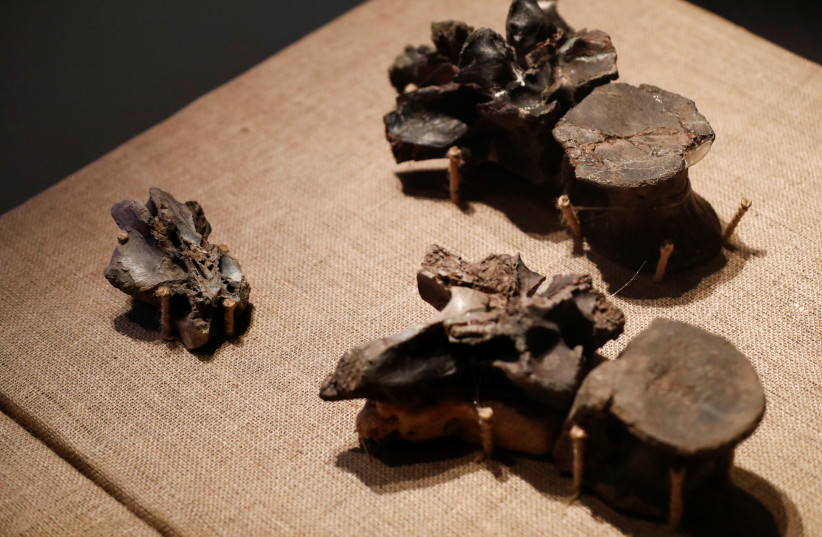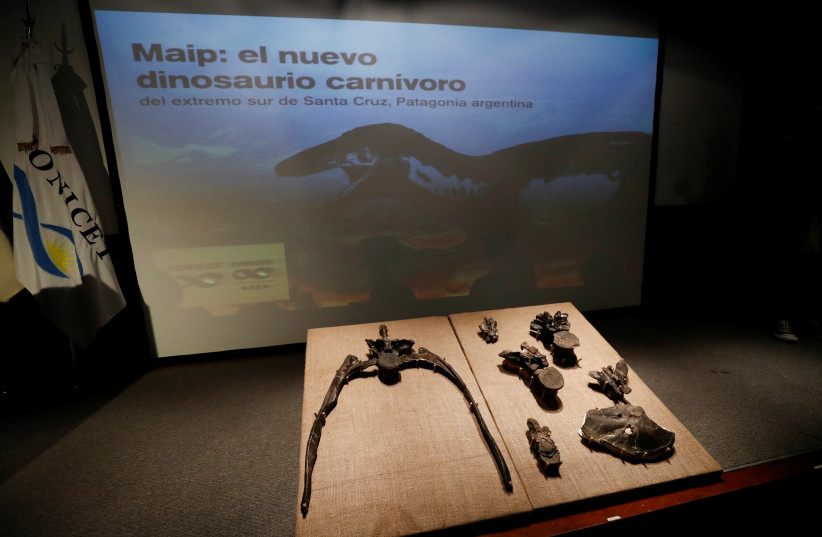The fossilized remains, which consisted of teeth and post-cranial bone pieces, represent a diverse theropod community that lived up until the Cretaceous–Paleogene mass extinction event.
Fossils of four dinosaur species previously not known to have lived in the Las Chinas Valley, located near Chile’s border with Argentina, were discovered in the now-inhospitable South American valley some two years ago, with the findings detailed in a study published in December.
The peer-reviewed study, published in the Journal of South American Earth Science, stated that the remains found provided valuable insight into the diverse fauna present in southernmost America during the Late Cretaceous period [100-66 million years ago].
The fossilized remains, which consisted of teeth and post-cranial bone pieces, represent a “diverse theropod community that lived up until the Cretaceous–Paleogene mass extinction event,” in which three-quarters of all plant and animal life on Earth were suddenly eliminated some 66 million years ago, the study noted.

Six British mosques mourn death of Iran regime terrorist Soleimani
{City}: Giá ghế sofa sẽ làm bạn ngạc nhiên!Sponsored by Tìm hiểu thêmJapan leads world in childless middle-aged womenSponsored by Nikkei AsiaDiscover the Most Luxurious Homes in San FranciscoSponsored by Mansion GlobalJapanese liquor makes little splash in global marketSponsored by Nikkei Asia.

Marcelo Leppe, a director of the Chilean Antarctic Institute which formed part of the research team, expressed his excitement “to find something that has not previously been discovered or described in the Las Chinas valley, where we have become used to finding new fossil remains,” he told AFP.
“It’s always super exciting in scientific terms to find something that has not previously
been discovered or described in the Las Chinas valley, where we have become used to finding new fossil remains.”
Marcelo Leppe, director of the Chilean Antarctic Institute
What was important about the fossil findings in Chilean Patagonia?
The fossils were identified as belonging to megaraptora, unenlagiinae , enantiornithines and ornithurae subfamilies of theropods. These were the southernmost discoveries of these families of dinosaurs outside of Antarctica, the researchers noted in the study.

Megraptora, whose relation to other dinosaurs is hotly debated within the scientific world, is thought to have lived between 66 and 75 million years ago, at the end of the Cretaceous period.
The second and third of the dinosaur subfamilies to be identified were found to be two types of Unenlagiinae – a group closely related to velociraptors. In the past few decades, this species of dinosaur has been discovered more frequently in Argentina and the surrounding regions.
Pakistan army chief assumes loan diplomacy role amid forex crisisSponsored by Nikkei AsiaIndia hosts online summit to amplify voice of Global SouthSponsored by Nikkei AsiaTake a Look at the World’s Most Luxurious Island PropertiesSponsored by Mansion GlobalBillionaire Cowboy Owner Pays $250m For New Super YachtSponsored by Mansion Global
The final species, of which there were two fossilized remains, were found to belong to the enantiornithines avian subfamily.
Paleontogy in Argentina
Since the discovery of these fossils, Paleontologists have discovered the partial skeleton of a previously unknown dinosaur in southern Argentina. This new species, according to science website physics.org, is theorized to be related to or a type of thyreophoran.
The aforementioned study also noted that while Argentina has a strong paleontology industry, there has been a growing number of fossils being illegally removed from the region.
The removal of fossils is thought to have a devastating impact on the scientific communities’ ability to analyze data from the fossils. Since 1863, a permit is required to source and collect fossils have required a permit in the South American country.
source:www.jpost.com














